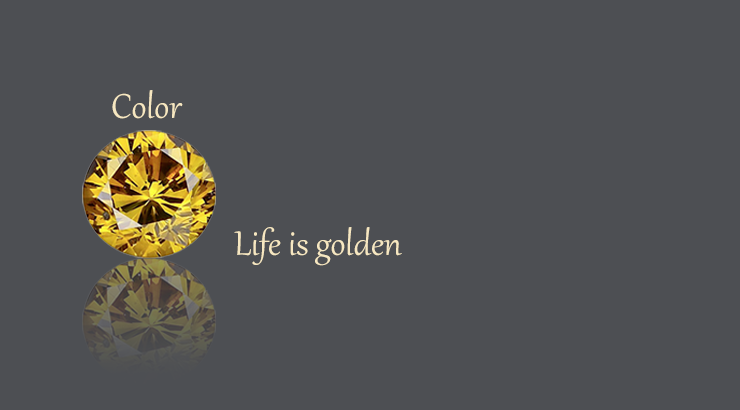
Colorless diamonds, normally referred to as white diamonds, are graded using a standardized diamond color set at the gemological institute. The best color grade is "D". These diamonds are rarer and hence more expensive than other white diamond color grades. Grades E and F are considered excellent, and G or H diamonds will look just as good to the naked eye. As you proceed farther through the alphabet the color starts to become ever so slightly yellow and the price also decreases. When a K color is placed beside an F color under the same light, most people will notice more yellow in the K. White diamonds are graded from D to Z.
Once the color saturation becomes more intense, the diamond is no longer considered white and is far more rare than the best white diamond. The diamond then falls under the more expensive diamond category call Fancy Color Diamonds. Approximately 1 in every 10,000 diamonds found is considered a fancy color diamond. What is important to know is that the grading for each group is entirely different.
Fancy Color Diamonds or FCDs are very rare in general; in fact, higher the intensity grade (7, 8, 9), the rarer is the FCD. According to the Gemological Institute of America a scale of nine grades is used to grade FCDs.
1. Faint
2. Very Light
3. Light
4. Fancy Light
5. Fancy
6. Fancy Dark
7. Fancy Intense
8. Fancy Deep
9. Fancy Vivid
The lowest grade on the scale is “Faint” which is the borderline that separates FCDs from White diamonds (Z color). According to the GIA, there are three main elements for grading FCDs: Hue, Tone, and Saturation. Understanding the differences between hue, tone, and saturation is challenging.
1. Hue or color refers to the main color of the diamond such as Red, Blue, Pink or Yellow; there are 27 hues in all. While considering the 27 different colors, it is important to note that sometimes hues include a combination of main and modifying colors. For example, a Greenish-Yellow diamond may contain a Yellow hue and modifying tints of Green. When a diamond has more than one color, the last color mentioned is the main color of the stone. You should keep this in mind even when considering diamonds that have a third, fourth and fifth color!
2. Tone defines how light or dark the color or hue of the diamond actually is. It refers to the diamonds intensity of color. Grading tone involves the following seven gradients from (1) Very Light, (2) Light, (3) Medium Light, (4) Medium, (5) Medium Dark, (6) Dark, to (7) Very Dark.
3. Saturation refers to the strength of color or how much color is present and how intense it is. The saturation of light toned diamonds varies from Pastel to Vivid, while dark tones range from Dark to Deep. The GIA uses six different levels to grade saturation.
The intensity color grading of a diamond is based on a combination of tone and saturation. As you can see it has nine different grades.
One last feature to consider when discussing diamond color is color distribution. Color distribution refers to how evenly the color extends across the diamond. Color distribution ranges are: Even and Uneven.


